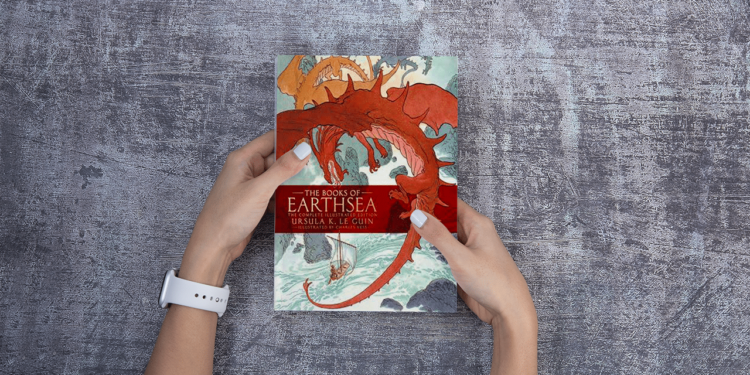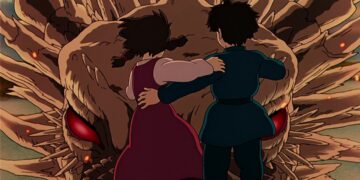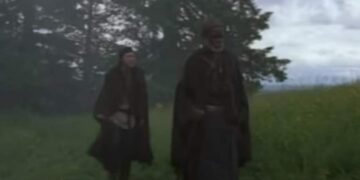Ursula K. Le Guin is a name that resonates throughout the literary world. Her unique blend of science fiction and fantasy, combined with her insightful exploration of sociopolitical themes, has made her one of the most influential authors of our time. But who is the woman behind the words? In this article, we will delve into the enigma that is Ursula K. Le Guin, uncovering her biography, exploring her literary influence, and even uncovering her unlikely love affair with cinema.
Ursula K. Le Guin’s Biography
Born on October 21, 1929, in Berkeley, California, Ursula K. Le Guin was destined to become a literary icon. She was the daughter of two prominent anthropologists, Alfred L. Kroeber and Theodora Kroeber, which undoubtedly shaped her early fascination with different cultures and societies. Le Guin’s childhood was filled with books and storytelling, and it was clear from a young age that she had a gift for words.
Le Guin attended Radcliffe College, where she studied French and Italian literature. After completing her undergraduate degree, she pursued a Master’s in Romance literature at Columbia University. It was during this time that she began to explore her own writing, experimenting with different genres and styles. In 1962, she published her first novel, “Rocannon’s World,” marking the beginning of a remarkable literary career.
Is Ursula K. Le Guin Still Alive?
Before we delve deeper into the life and work of Ursula K. Le Guin, it’s important to address a question that often arises: is she still alive? Unfortunately, no, Ursula K. Le Guin passed away on January 22, 2018, at the age of 88. Though she may no longer be with us, her legacy lives on through her words and the impact she made on the literary world.
Exploring Ursula K. Le Guin’s Literary Influence
Ursula K. Le Guin’s literary influence cannot be overstated. Her works have inspired countless readers and writers, challenging the boundaries of traditional science fiction and fantasy. Le Guin’s ability to seamlessly blend social commentary with imaginative storytelling set her apart from her contemporaries.
One of the hallmarks of Le Guin’s writing is her exploration of gender roles and social hierarchies. In her groundbreaking novel, “The Left Hand of Darkness,” she introduced readers to a world where gender is fluid, challenging traditional notions of masculinity and femininity. This bold exploration of gender and sexuality was ahead of its time and continues to resonate with readers today.
Another aspect of Le Guin’s influence is her examination of power dynamics and political systems. In her renowned “Earthsea” series, she delves into themes of oppression, colonization, and the abuse of power. Through her vivid world-building and complex characters, she provides readers with a thought-provoking critique of societal structures.
The Unlikely Love Affair with Cinema
While Ursula K. Le Guin is primarily known for her literary accomplishments, she also had an unexpected love affair with cinema. Le Guin’s works have been adapted for the screen, with varying degrees of success. One of the most notable adaptations is the television miniseries “Earthsea,” which aired in 2004. Although the adaptation received mixed reviews from fans and critics alike, it brought Le Guin’s fantastical world to a wider audience.
Despite her reservations about adaptations of her work, Le Guin recognized the power of cinema to bring stories to life. In an interview, she once said, “Film has the power to transport us to new worlds and challenge our preconceived notions. While it may not always capture the essence of a book, it can offer a unique interpretation and expand the audience’s imagination.” This sentiment speaks to her open-mindedness and willingness to embrace different mediums of storytelling.
Intriguing Tidbits about Ursula K. Le Guin’s Life
Ursula K. Le Guin led a fascinating life, filled with intriguing tidbits that shed light on her personality and creative process. For instance, she had a rich love life and friendships that greatly influenced her writing. Le Guin was married to Charles A. Le Guin, a historian, and they had three children together. Their relationship was one of love and support, and Charles often served as a sounding board for Ursula’s ideas.
Le Guin’s friendships also played a significant role in her life and work. She was close friends with renowned authors such as Margaret Atwood and Vonda N. McIntyre, with whom she exchanged ideas and engaged in intellectual discussions. These relationships provided her with a supportive community of fellow writers who understood the challenges and joys of the creative process.
Despite her literary success, Le Guin never considered herself “rich” in the traditional sense. She once stated, “I’m not rich, but I have enough to live a comfortable life and to pursue my writing. That’s all I need.” This humility and focus on the craft of writing is evident in her works, which are driven by a genuine passion for storytelling rather than financial gain.
Ursula K. Le Guin’s Best Quotes
Ursula K. Le Guin was a master of words, crafting sentences that resonated with readers and captured the essence of the human experience. Here are some of her best quotes:
- “The only thing that makes life possible is permanent, intolerable uncertainty; not knowing what comes next.”
- “It is good to have an end to journey toward; but it is the journey that matters, in the end.”
- “Love doesn’t just sit there, like a stone; it has to be made, like bread; remade all the time, made new.”
- “To light a candle is to cast a shadow.”
- “The creative adult is the child who survived.”
These quotes exemplify Le Guin’s ability to distill complex emotions and ideas into concise and impactful statements. They offer insight into her worldview and provide readers with a glimpse into the depth of her wisdom.
Setting the Stage: The Main Places Where Ursula K. Le Guin’s Books Are Set
Ursula K. Le Guin’s books are known for their richly imagined worlds and intricate settings. Here are some of the main places where her books are set:
- Earthsea: The “Earthsea” series is perhaps Le Guin’s most beloved work. It is set in a vast archipelago, where magic and dragons reign. The series follows the adventures of Ged, a young wizard, as he battles dark forces and navigates the complexities of power.
- Orsinia: In “Malafrena,” Le Guin takes readers to the fictional country of Orsinia, a land inspired by Eastern Europe. The novel explores themes of revolution, love, and the search for identity against the backdrop of a turbulent political landscape.
- Anarres and Urras: “The Dispossessed” is set on two contrasting worlds, Anarres and Urras. Anarres is an anarchist society, while Urras represents a capitalist society. The novel explores the clash of ideologies and the challenges of creating a utopian society.
- Gethen: In “The Left Hand of Darkness,” Le Guin introduces readers to the planet of Gethen, where its inhabitants are androgynous and have the ability to change their gender. The novel explores themes of gender, sexuality, and the complexities of human relationships.
These are just a few examples of the rich and diverse settings that Le Guin created throughout her career. Each world is meticulously crafted, immersing readers in unique and thought-provoking landscapes.
The First and Last Books of Ursula K. Le Guin
The first book published by Ursula K. Le Guin was “Rocannon’s World” in 1962. This novel marked the beginning of her illustrious career and introduced readers to her imaginative storytelling and richly developed characters. “Rocannon’s World” is a science fiction novel set in a universe where different races and civilizations coexist.
On the other hand, the last book published by Le Guin before her passing was “No Time to Spare: Thinking About What Matters” in 2017. This non-fiction work offers a collection of essays that reflect on various aspects of life, including aging, literature, and the environment. It serves as a testament to Le Guin’s thoughtfulness and introspection, showcasing her ability to engage readers not only through fiction but also through personal reflection.
The Earthsea Screen Adaptation and Its Impact
One of the most significant adaptations of Ursula K. Le Guin’s work is the screen adaptation of her “Earthsea” series. The miniseries, which aired in 2004, aimed to bring Le Guin’s fantastical world to life. However, it received mixed reviews from fans and critics, with some praising its visuals and others criticizing its departure from the source material.
Despite the mixed reception, the Earthsea adaptation had a lasting impact. It introduced a new generation of viewers to Le Guin’s imaginative universe and sparked discussions about the challenges of adapting complex works of literature for the screen. The adaptation also prompted renewed interest in the “Earthsea” series, leading to increased book sales and a broader appreciation for Le Guin’s storytelling.
Other Artists Who Inspired Ursula K. Le Guin
Ursula K. Le Guin’s creative process was shaped by a diverse range of influences, including other artists who inspired her. One such artist was J.R.R. Tolkien, whose “The Lord of the Rings” trilogy captivated Le Guin with its intricate world-building and epic storytelling. Tolkien’s ability to create a complex mythology and interweave multiple narratives left a lasting impression on Le Guin’s own approach to storytelling.
Another influential figure in Le Guin’s life was Virginia Woolf. Woolf’s exploration of feminist themes and innovative narrative techniques inspired Le Guin to push the boundaries of traditional storytelling. Le Guin admired Woolf’s ability to capture the complexities of human emotions and translate them into powerful prose.
Le Guin also drew inspiration from the works of Gabriel García Márquez, particularly his novel “One Hundred Years of Solitude.” Márquez’s magical realism and vivid descriptions resonated with Le Guin, inspiring her to infuse her own writing with elements of the fantastical.
Must-Read Authors and Books for Fans of Ursula K. Le Guin
If you’re a fan of Ursula K. Le Guin and looking for similar authors and books to explore, here are some recommendations:
- Octavia Butler – Known for her thought-provoking science fiction, Butler’s works, such as “Kindred” and “Parable of the Sower,” tackle themes of race, gender, and power.
- N.K. Jemisin – Jemisin’s “Broken Earth” trilogy, which starts with “The Fifth Season,” is a masterful blend of fantasy and science fiction, exploring themes of oppression and survival.
- Neil Gaiman – Gaiman’s imaginative storytelling and mythological inspirations, showcased in works like “American Gods” and “Stardust,” make him a must-read for Le Guin fans.
- Margaret Atwood – Atwood’s dystopian novel, “The Handmaid’s Tale,” and her speculative fiction series, “MaddAddam,” tackle themes of power, gender, and environmentalism.
- China Miéville – Miéville’s works, such as “Perdido Street Station” and “The City & the City,” blend fantasy, steampunk, and political commentary, offering a unique reading experience.
These authors and their respective works share thematic similarities with Le Guin’s writing, exploring sociopolitical issues within the realms of science fiction and fantasy.
Buying Guide and Gift Ideas for Ursula K. Le Guin Fans
If you’re a devoted Ursula K. Le Guin fan or looking for the perfect gift for someone who is, here are some buying guide and gift ideas:
- Complete Earthsea Box Set: This box set includes all six books from the “Earthsea” series, allowing fans to immerse themselves in Le Guin’s enchanting world.
- “The Left Hand of Darkness” Collector’s Edition: This special edition of Le Guin’s groundbreaking novel features a beautiful cover and additional bonus content, making it a collector’s item for fans.
- “Worlds of Ursula K. Le Guin” Documentary DVD: This documentary offers an intimate look into Le Guin’s life and work, providing fans with a deeper understanding of her creative process.
- “The Books of Earthsea” Illustrated Edition: This stunningly illustrated edition of the “Earthsea” series features artwork by renowned artist Charles Vess, bringing the characters and landscapes to life.
- “The Hainish Novels and Stories” Omnibus: This omnibus edition collects Le Guin’s influential Hainish cycle, including novels and short stories set in the same universe. It’s a must-have for fans who want to explore the breadth of her work.
These gift ideas and buying guide options are sure to delight any fan of Ursula K. Le Guin, allowing them to further immerse themselves in her captivating worlds.
Conclusion
Ursula K. Le Guin’s bio, influence, and unlikely love affair with cinema have made her a literary legend. Her exploration of sociopolitical themes, innovative storytelling, and richly imagined worlds have captivated readers for decades. While she may no longer be with us, her legacy lives on through her words and the impact she made on the literary world. Whether you’re a longtime fan or new to her work, diving into the world of Ursula K. Le Guin is an experience that will stay with you long after you turn the last page.










